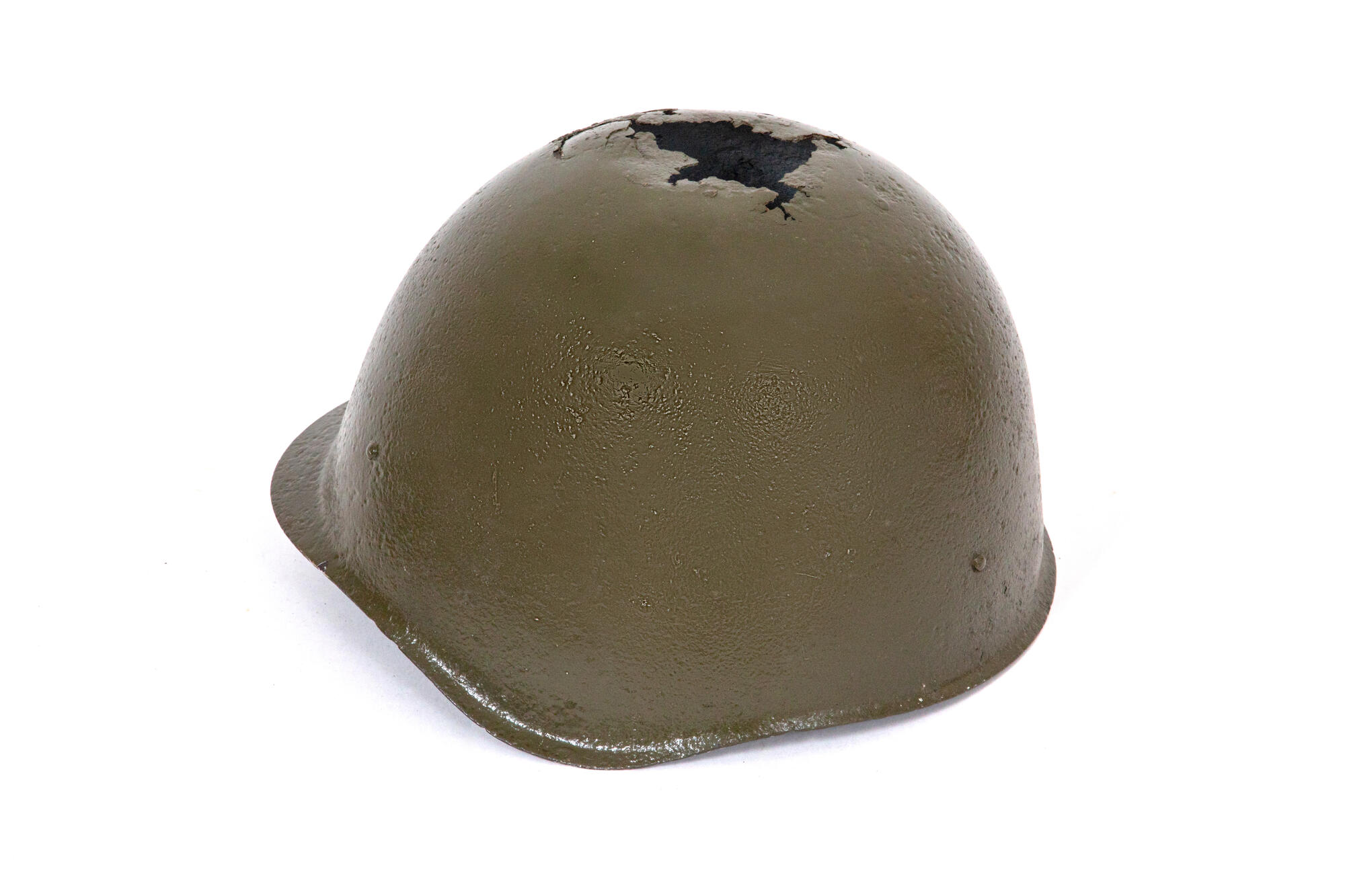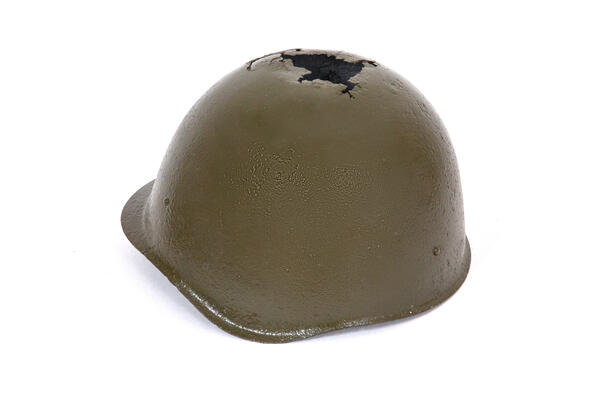After the battles on Lake Khasan in 1938 and the Khalkhin-Gol River in 1939 it was established that the steel helmet SSh-36, which was used by the Red Army, had serious defects. The wide flares of the so-called ‘Khalkingolka’ did not allow the soldiers to move quickly. The big front rim significantly blocked the view, the cheap steel did not protect well from heavy bullets and shell fragments. The Red Army Command decided to develop a new design without recalling the old ones from active military actions.
The new steel helmet model was designed in June 1939. However, during The Winter War (also known as the First Soviet-Finnish War) with Finland, it became clear that the canvas liner (‘podtuleinik’ in Russian), which helped the helmet to be secured on the head, did not let the soldier to wear a warm cap under it. The wool liners which were specifically designed for SSh-39 could not protect from the freezing weather.
The steel helmet SSh-40 with a modified liner was adopted by the Red Army in December 1940. Unlike the 1936 helmets, the SH-40 was made of alloy steel armor — a much stronger material. It was 1.2 mm thick. Thus, the new helmet protected better from gun and rifle bullets.
The helmet had three sizes. The helmet weight depended on the size. The biggest one without the liner weighed about 800 grams.
The liner fastened with six small metal rivets. That is why soldiers called It ‘shestiklepka’ (six-rivets).
During the war, the ‘Krasny Oktyabr’ Steel Plant and the Lysva Metallurgical Plant manufactured these helmets. The armor resistance of SSh-40 was tested at shooting ranges during initial tests. The selected samples were fired with the Mosin–Nagant rifle chambered in 7.62 mm cartridge (model 1891/30), from a distance of 25 meters. Sometimes the helmets damaged during battles were delivered to the Lysva Metallurgical Plant. Expert engineers examined the location and the type of damages and improved the helmets.
The 1940 Steel helmet was used by the Armed Forces of the USSR even after the end of the World War II, up until the development of the improved SSh-60 and SSh-68.
The new steel helmet model was designed in June 1939. However, during The Winter War (also known as the First Soviet-Finnish War) with Finland, it became clear that the canvas liner (‘podtuleinik’ in Russian), which helped the helmet to be secured on the head, did not let the soldier to wear a warm cap under it. The wool liners which were specifically designed for SSh-39 could not protect from the freezing weather.
The steel helmet SSh-40 with a modified liner was adopted by the Red Army in December 1940. Unlike the 1936 helmets, the SH-40 was made of alloy steel armor — a much stronger material. It was 1.2 mm thick. Thus, the new helmet protected better from gun and rifle bullets.
The helmet had three sizes. The helmet weight depended on the size. The biggest one without the liner weighed about 800 grams.
The liner fastened with six small metal rivets. That is why soldiers called It ‘shestiklepka’ (six-rivets).
During the war, the ‘Krasny Oktyabr’ Steel Plant and the Lysva Metallurgical Plant manufactured these helmets. The armor resistance of SSh-40 was tested at shooting ranges during initial tests. The selected samples were fired with the Mosin–Nagant rifle chambered in 7.62 mm cartridge (model 1891/30), from a distance of 25 meters. Sometimes the helmets damaged during battles were delivered to the Lysva Metallurgical Plant. Expert engineers examined the location and the type of damages and improved the helmets.
The 1940 Steel helmet was used by the Armed Forces of the USSR even after the end of the World War II, up until the development of the improved SSh-60 and SSh-68.



